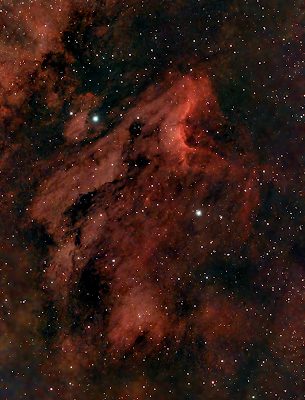A Seestar S50 captured 118 minutes worth of 10 second data over a 4 hour period to capture the whole of the Pelican nebula. Because the anti-dew lens heater was used, the Seestar S50 ran very low on power after about 4 hours and the session was terminated. The way that Mosaic mode works is that the central area of the mosaic gets more exposure than the peripheral regions and so has a better signal to noise ratio. If more power had been available, the regions of the mosaic that were cropped out may not have required cropping or a smaller amount would have needed to be cropped. A 50,000 mWh power bank has been obtained to allow longer times to be spent on other mosaics in the future if the weather allows.
Nevertheless satisfactory results were obtained.
Click on an image to get a closer view.
Animation of tablet screenshots capturing the mosaic of the Pelican nebula.




No comments:
Post a Comment